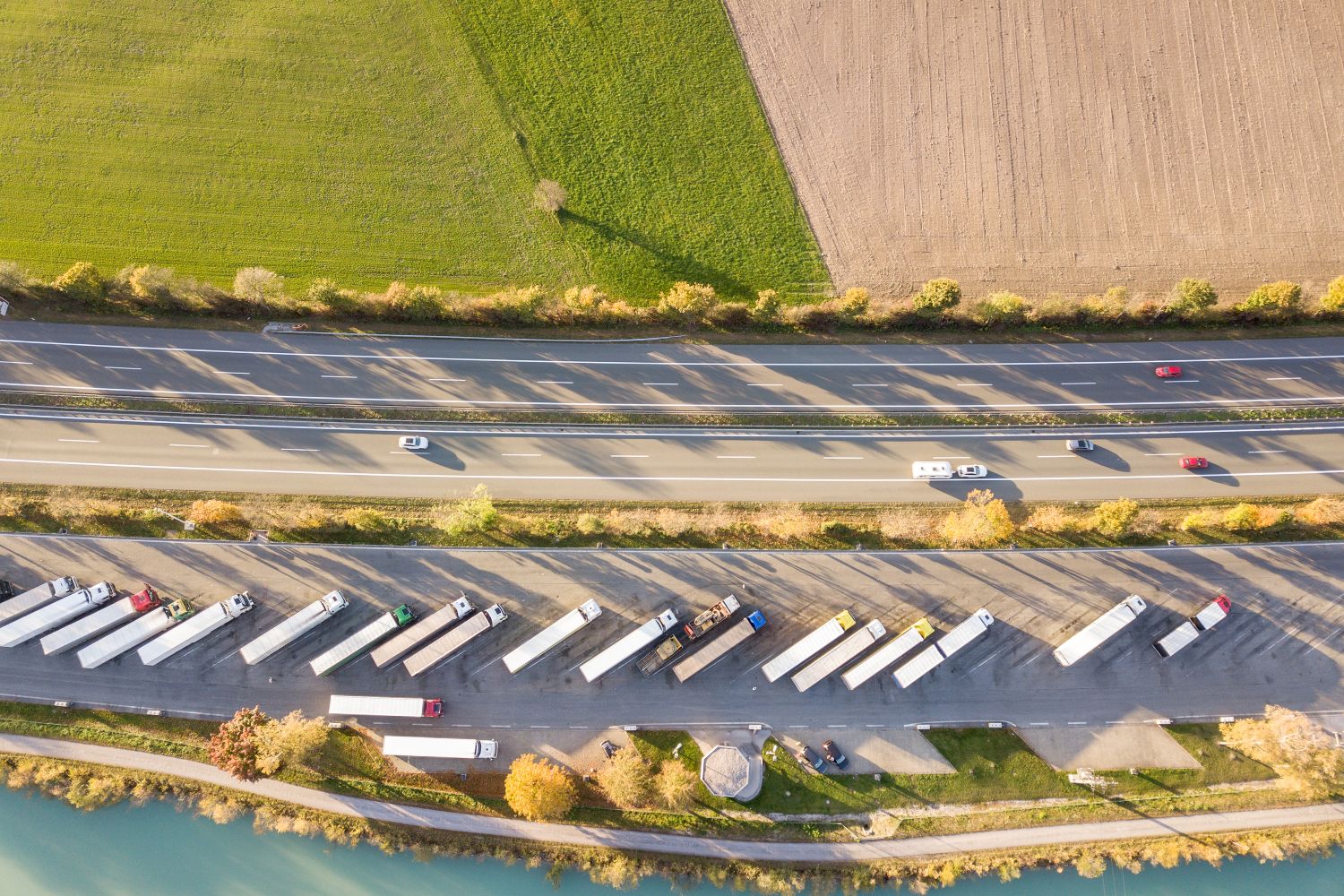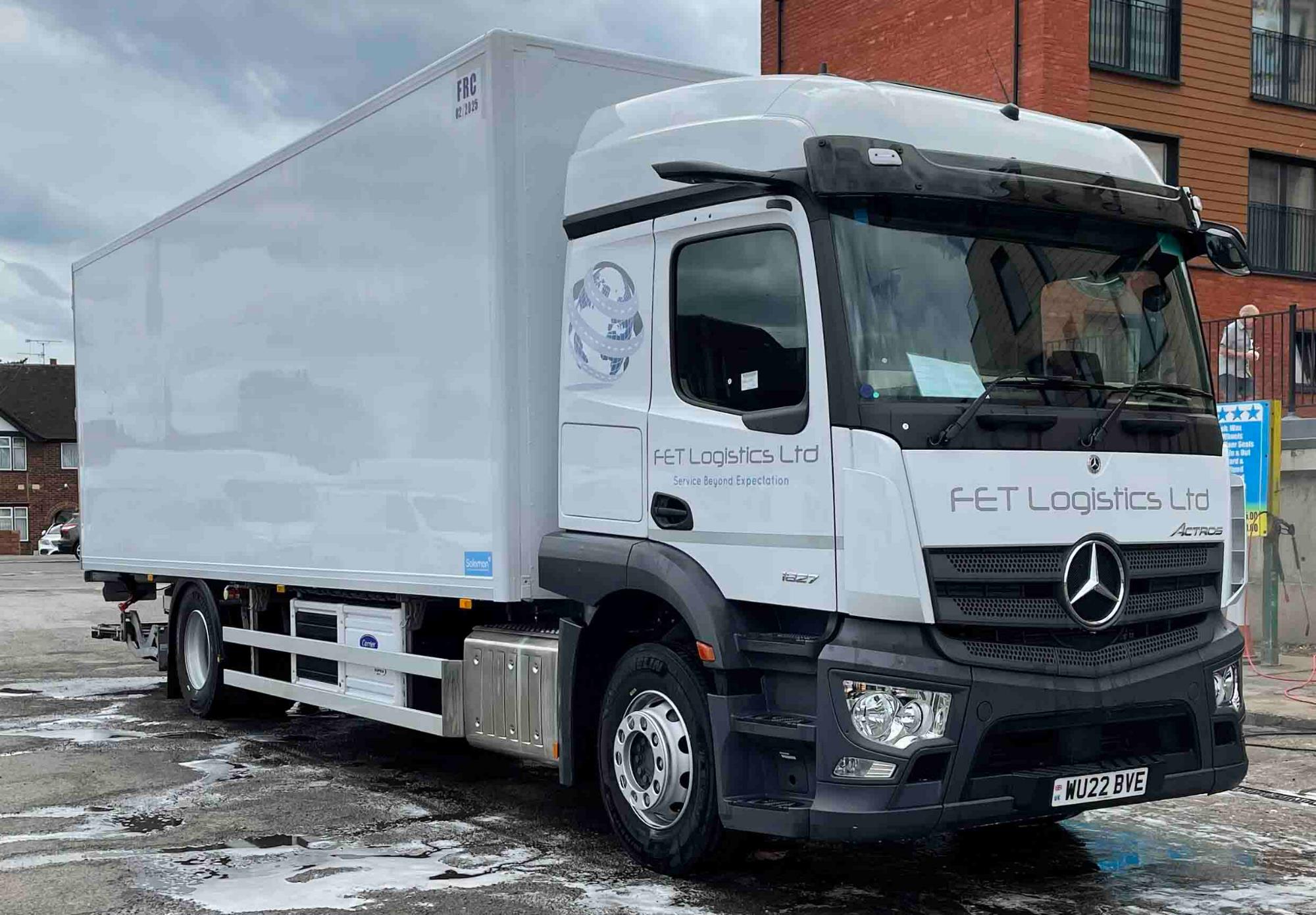
Guest
Polen beschleunigt die Umstellung auf emissionsfreien Gütertransport
Erstellt: 25.11.2025
•
Aktualisiert: 25.11.2025
Der polnische Verkehrssektor befindet sich in einem tiefgreifenden Wandel. In den letzten Monaten hat die Regierung eine Reihe von hochwertigen Finanzierungsprogrammen eingeführt, die auf die Dekarbonisierung des Straßennetzes und der Logistik des Landes abzielen. Ein Großteil dieser Aktivitäten konzentriert sich auf die Infrastruktur für schwere Nutzfahrzeuge - ein Zeichen dafür, dass der Übergang zu einem umweltfreundlicheren Güterverkehr in ganz Europa auf Zustimmung stößt.
Der Umfang der Investitionen - und die Geschwindigkeit, mit der sie getätigt werden - werden für Betreiber, Manager und Infrastrukturplaner in ganz Europa von Bedeutung sein. Um zu verstehen, warum dies so ist, ist es hilfreich, sowohl den breiteren europäischen Kontext als auch die in Polen verfügbaren spezifischen Mittel zu betrachten.
Europas Weg zu Null-Emissionen
Die Entwicklung hin zu einem emissionsarmen und emissionsfreien Verkehr hat in Europa seit einigen Jahren an Fahrt gewonnen. Mit dem EU-Paket Fit for 55 und dem Green Deal wurden ehrgeizige Ziele gesetzt, um die Emissionen von schweren Nutzfahrzeugen bis 2030 um 45 % und bis 2040 um 90 % zu senken.
Die [Verordnung über die Infrastruktur für alternative Kraftstoffe] (https://www.consilium.europa.eu/en/press/press-releases/2023/07/25/alternative-fuels-infrastructure-council-adopts-new-law-for-more-recharging-and-refuelling-stations-across-europe/) (AFIR) sieht außerdem vor, dass bis 2030 alle 60 Kilometer entlang des transeuropäischen Verkehrsnetzes (TEN-V) - einem System aus europäischen Straßen, Eisenbahnen, Häfen und Flughäfen, das das Rückgrat des kontinentalen Güterverkehrs bildet - Hochleistungsladestationen für schwere Fahrzeuge vorhanden sein müssen. Wasserstofftankstellen müssen alle 200 Kilometer zur Verfügung stehen.
Das Vereinigte Königreich geht einen ähnlichen Weg. Z[ero Emission Road Freight Demonstrator projects] (https://iuk-business-connect.org.uk/programme/zero-emission-heavy-goods-vehicles-and-infrastructure/) werden genutzt, um Elektro- und Wasserstoff-LKWs auf Langstrecken zu testen, während gleichzeitig Finanzmittel für Depot-Ladestationen und Betankungsinfrastruktur bereitgestellt werden.
Vor diesem Hintergrund zeigt das polnische Programm, dass Mittel- und Osteuropa bereit sind, eine führende Rolle beim Aufbau eines umweltfreundlicheren und besser vernetzten Verkehrssystems zu übernehmen.
Eine Verpflichtung in Höhe von mehreren Milliarden Złoty
Im März 2025 veröffentlichte der polnische Nationale Fonds für Umweltschutz und Wasserwirtschaft (NFOŚiGW) zwei große Finanzierungsaufrufe mit einem Gesamtvolumen von 2 Milliarden PLN.
Die erste betrifft den Bau und die Erweiterung von Stromnetzen, die Ladestationen mit hoher Kapazität versorgen, insbesondere solche auf dem TEN-V. Er umfasst sowohl den Netzausbau als auch die Installation neuer Anschlüsse. Dies bedeutet, dass das Netz die für das schnelle Aufladen von Lkw erforderliche Energie liefern kann. Energie- und Netzbetreiber können Zuschüsse beantragen, wenn ihre Projekte Mindestanforderungen an die Leistung erfüllen.
Mit der zweiten Aufforderung zur Einreichung von Vorschlägen wird der Bau von Ladestationen für schwere Nutzfahrzeuge selbst unterstützt. Ziel ist es, landesweit 550 öffentlich zugängliche Ladepunkte für Elektro- und Wasserstoff-Lkw zu schaffen.
Ein letztes Programm, das im zweiten Quartal 2025 anlief, gewährt Unternehmen Zuschüsse und Darlehen, damit sie emissionsfreie Lkw der Klassen N2 und N3 kaufen oder leasen können. Die Kategorie N2 umfasst Fahrzeuge mit einem Bruttogewicht zwischen 3,5 und 12 Tonnen, während N3 für Lkw über 12 Tonnen gilt. Die Höhe der Förderung liegt zwischen 30 und 60 Prozent, je nach Unternehmensgröße. Für N2-Fahrzeuge gilt eine Obergrenze von 400.000 PLN und für N3-Modelle eine Obergrenze von 750.000 PLN. Die Anträge können bis 2029 gestellt werden (https://www.logistyka.net.pl/aktualnosci/english-speaking-zone/item/96519-funding-for-zero-emission-trucks-has-been-launched?tmpl=component&print=1), so dass die Betreiber ihren Übergang zu emissionsfreien Fahrzeugen planen können.
Diese Investitionen ergänzen das bestehende polnische Programm [Nasz Eauto] (https://naszeauto.gov.pl/), das die Anschaffung von Elektroautos für Privatpersonen und Unternehmen subventioniert und die Strategie des Landes für einen nachhaltigen Verkehr über Personenkraftwagen hinaus erweitert.

Aufbau eines Schwertransportnetzes
Nach Angaben der [International Road Transport Union (IRU)] (https://www.iru.org/news-resources/newsroom/who-driving-what-and-where-eu-road-freight-trends) werden in Polen mehr Güter auf der Straße befördert als in jedem anderen EU-Land. Es ist ein natürliches Tor zwischen Westeuropa und den baltischen Staaten, der Ukraine und den Balkanländern, was bedeutet, dass eine zuverlässige emissionsfreie Infrastruktur in Polen europaweite Auswirkungen haben wird.
Durch die Festlegung klarer Leistungsanforderungen und die Ausrichtung der Projekte auf die TEN-V-Korridore gewährleistet die Regierung einen koordinierten Ansatz anstelle isolierter Projekte. Das Ziel ist ein zuverlässiges Netz, in dem sich Elektro- und Wasserstoff-Lkw auf wichtigen Handelsrouten frei bewegen können. Der stellvertretende Minister für Klima und Umwelt beschrieb das Programm als eine Möglichkeit, die Wettbewerbsfähigkeit polnischer Güterverkehrsunternehmen zu stärken und gleichzeitig die Emissionen eines der größten Wirtschaftssektoren des Landes zu senken.
Das polnische Inlandsnetz ist auch Teil der umfassenderen [Clean Transport Corridor Initiative] (https://transport.ec.europa.eu/news-events/news/eu-ministers-commit-faster-truck-recharging-deployment-2025-09-16_en). Insgesamt neun EU-Länder - darunter auch Polen - verpflichteten sich im September 2025, den Ausbau der Ladeinfrastruktur entlang wichtiger Güterverkehrsachsen wie dem Nord-Ostsee- und dem Skandinavien-Mittelmeer-Korridor des TEN-V zu beschleunigen.
Für Flotten, die europaweit tätig sind, bedeutet die Initiative, dass die Ladeinfrastruktur zwischen den Ländern standardisierter und berechenbarer wird. Dies wird den Fahrern helfen, grenzüberschreitende Routen mit größerer Sicherheit zu planen und gleichzeitig die Verlagerung hin zu emissionsfreiem Güterverkehr unterstützen.
Praktische Möglichkeiten und Herausforderungen in der Praxis
Für Flottenbetreiber ist der Zeitpunkt ermutigend. Emissionsfreie Lkw drängen rasch [auf den europäischen Markt] (https://theicct.org/publication/r2z-eu-hdv-market-development-quarterly-january-june-2025-sept25/), wobei in der ersten Hälfte des Jahres 2025 EU-weit fast 2.000 emissionsfreie schwere Elektro-Lkw registriert wurden.
Allerdings gibt es auch Herausforderungen. Der Aufbau von Hochleistungsladekapazitäten bedeutet, dass Netzbetreiber, lokale Behörden und Logistikzentren zusammenarbeiten müssen. Es wird auch einige Zeit dauern, bis Techniker mit den erforderlichen Fähigkeiten für die Installation und Wartung von Hochspannungsanlagen eingestellt sind.
Darüber hinaus könnten auch die Fahrzeugkosten und betriebliche Faktoren den Fortschritt bremsen. Selbst bei großzügigen Subventionen müssen die Unternehmen die Kosten für den Besitz von Elektrofahrzeugen, die Streckenführung und die Bereitschaft des Depots abwägen.
Was es für die Mobilität bedeutet
Für den Straßenverkehr ist das polnische Programm ein wichtiger Meilenstein. Sobald es abgeschlossen ist, wird das Lade- und Tankstellennetz Ost- und Westeuropa miteinander verbinden und einen saubereren und effizienteren Güterverkehr ermöglichen.
"Dies ist ein Wendepunkt für den Schwerlastverkehr", sagt Nick Renton, Leiter der europäischen Strategie und Geschäftsentwicklung bei SNAP. "Die Maßnahmen Polens zeigen, dass der emissionsfreie Güterverkehr zum Alltag gehört und keine langfristige Vision ist. In dem Maße, wie sich die Zahl der Lade- und Tankstellen vervielfacht, werden die Betreiber in der Lage sein, umweltfreundlichere Fahrten mit Zuversicht zu planen.
Je nachdem, wie sich die Situation entwickelt, werden wir Flotten in ganz Europa weiterhin mit Technologie, Einblicken und praktischen Tools für Fahrer unterstützen. Unsere [intruck-App] (https://intruckapp.com/) hilft bei der Suche und Buchung von Raststätten, Tankstellen und sicheren Parkplätzen, wobei mit der Eröffnung neuer Standorte weitere emissionsfreie Einrichtungen hinzugefügt werden. Betreibern, die den Veränderungen in der Infrastruktur voraus sein wollen, bietet die App einen klaren Überblick über die Entwicklung des Straßennetzes - und darüber, wo sich neue Möglichkeiten ergeben.



